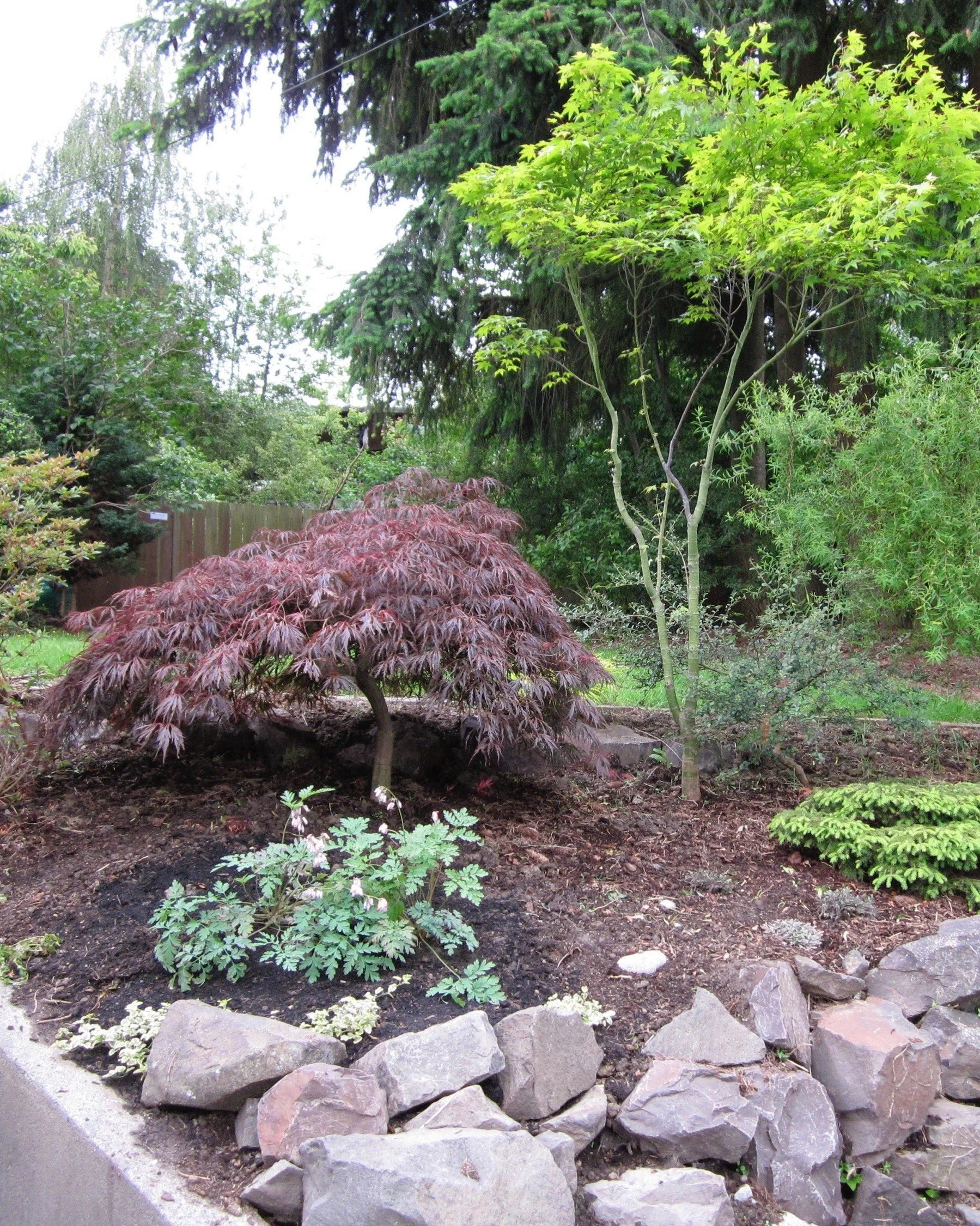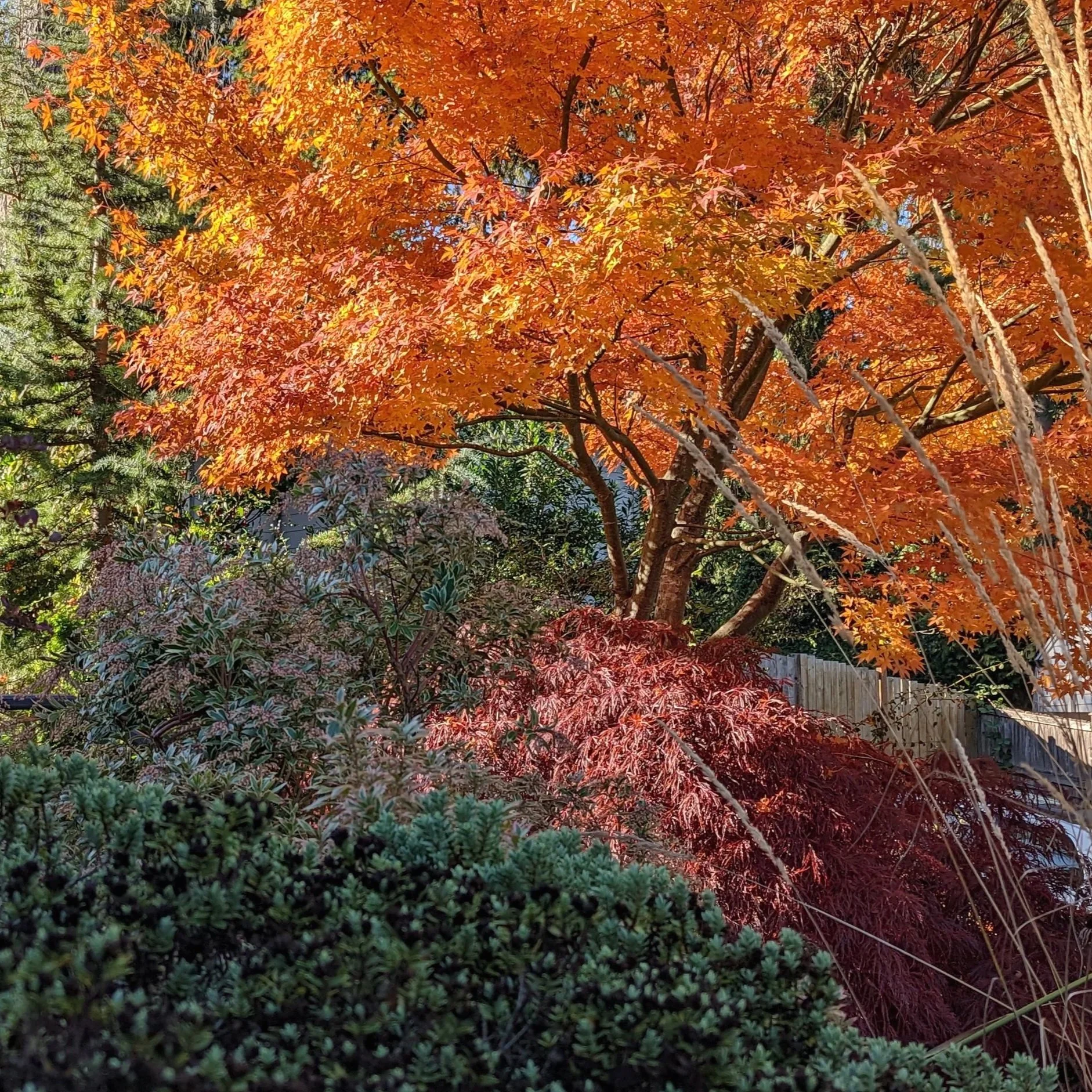My front garden Japanese maples
It is hardly uncommon in Seattle gardens to have a few Japanese maples, and of course they are well known for bringing color into the garden in the fall. There are dozens of commonly available tree genuses besides Japanese maples that are great for small urban gardens, and most of them are underutilized — I try to pick trees for some amount of diversity and originality when I add something to the garden. That said, there is nothing quite like the range of colors, textures, leaf shapes, forms and sizes that can be found in Japanese maples, so it is certainly worth featuring a few. One thing I would recommend is to not copy what your neighbors have. The world already has enough ‘Bloodgood’ and coral bark (‘Sango kaku’) maples, spend a little time shopping to pick out something more unique!
As of 2025, I have eight Japanese maples in my garden. Three were here at the house already when we moved in back in 2010. This post is going to be about the pair of trees in the little front garden.
I look forward to the fall show from these trees every year
It has been a thrill to watch these trees grow up over the past fifteen years (you know you are a plant nerd when taking pictures of a slowly evolving tree is one of your favorite pastimes!). As a guess, they may have been in the ground for five years when we moved in, so they’re probably pushing twenty years in the ground by now. Here are a couple of pictures from 2010 and 2013 to help appreciate how much they’ve grown; the house and garden have also had a nice glow up over the years, but these trees are still the standout features, especially in fall.
I don’t know exactly what cultivars these trees are. The purple weeping tree is a dwarf laceleaf variety, similar to a common cultivar called Crimson Queen. It emerges with deep purple leaves in the spring that fade a bit in summer heat to become green in the center edged with bronzy purple. In fall, it is a glorious deep scarlet or crimson.
The upright green maple is reminiscent of the straight species of acer palmatum. The leaves are a seven pointed star, as can be seen in pictures below. They are bright green in spring, aging to medium green in the summer. In early fall, it is a kaleidoscope of color, with individual leaves taking on spots of red, green, orange and even a bit of gold. It eventually flushes to a deep orange everywhere, for me this is right around November 1st each year. It is one of three glorious mature upright maples on my street, and from my front door I have a neat vantage point where they all sort of line up. I love gazing out the front door in October. The neighbors probably think I’m staring at them, but no, it’s just your trees. 😆
Is there anything better than fall color on trees?
For fun, below is a throwback photo of the front garden from our first month in residence (April of 2010), compared with a more recent photo. In the early photo, Erin has saw in hand, ready to take out the overgrown junipers and arborvitae which were so popular in the 60s and 70s. I’ve done a lot of work on the front garden, and have moved or taken out nearly everything. But I am so glad to have those two maples!
Wherever you are, I hope you have a few trees you like to keep track of, too!









